Voting Rights Act
The Voting Rights Act (VRA) of 1965 is one of the most significant pieces of civil rights legislation in American history, and its importance had a profound impact on voting rights and democratic governance. Why are we still fighting the same battle for Voting Rights some 154 years later? Here’s why it’s important:
Key Takeaways:
Elimination of Racial Discrimination: The Act dismantled legal barriers that prevented minorities, especially African Americans, from voting.
Enforcement of the 15th Amendment: It effectively enforced the constitutional right to vote without racial discrimination.
Federal Oversight in Discriminatory Jurisdictions: Section 5 required jurisdictions with histories of voting discrimination to obtain federal approval before changing voting laws, ensuring protection against disenfranchisement.
Table of Contents
- Is Voting a Right or a Privilege?
- America's Progression of Views
- What did the Voting Rights Act of 1965 do?
- What is the Direct Effect of Citizens Voting?
- The need for reauthorization
- What is Section 2 of The Voting Rights Act?
- Historical Context
- Voting Rights Before the Voting Rights Act
- The Impact of Section 2 of the VRA on U.S. Elections
- The Supreme Court's decision in Brnovich v Democratic National Committee (2021)
- Recaping Voting Rights Act Section 2…
- Answering Why The Voting Rights Act is Important
- Historical Significance of the VRA: Examining its Impact on Civil Rights
- Dismantling Discriminatory Practices: How the VRA Transformed Voter Registration and Participation
- Symbol of Democratic Equality: The VRA's Role in Upholding Justice and Fairness in Voting
- A Turning Point in American History: The VRA and its Contribution to the Civil Rights Movement
- Voting Rights Act: Why It's Important What You Need To Know
- Frequently Asked Questions
Is Voting a Right or a Privilege?
In the United States, voting is considered a constitutional right for its citizens. This right is protected and outlined in several amendments to the U.S. Constitution and through key federal legislation like the Voting Rights Act of 1965:
15th Amendment (1870): Prohibits the federal government and each state from denying a citizen the right to vote based on that citizen’s “race, color, or previous condition of servitude.”
19th Amendment (1920): Grants women the right to vote, prohibiting any United States citizen from being denied the right to vote based on sex.
America’s Progression of Views
24th Amendment (1964): Prohibits both Congress and the states from conditioning the right to vote in federal elections on payment of a poll tax or other types of tax.
26th Amendment (1971): Prohibits the states and the federal government from using age as a reason for denying the right to vote to citizens of the United States who are at least 18 years old.
- Voting Rights Act of 1965: This pivotal piece of federal legislation was enacted to enforce the voting rights guaranteed by the 14th and 15th Amendments, particularly for racial minorities.
It prohibits discriminatory voting practices and, originally, required certain jurisdictions with a history of discrimination to receive federal pre-clearance before changing voting laws (though the pre-clearance requirement was significantly altered by the Supreme Court’s decision in Shelby County v. Holder in 2013).
While these amendments and the Voting Rights Act establish voting as a right, there are conditions under which individuals may be disenfranchised. For example, many states restrict voting rights for convicted felons, either temporarily or permanently, depending on state law.
Additionally, the right to vote in primary elections is not a constitutional right. States regulate their primary elections and voting procedures which can be considered more of a privilege granted by political parties than a constitutional right.
In the United States, voting is generally considered a fundamental right, but there are specific instances and nuances where it can be regulated or restricted.
What did the Voting Rights Act of 1965 do?
Eliminating Racial Discrimination in Voting: Before the VRA, racial minorities, particularly African Americans in the Southern states, faced significant barriers to voting, including literacy tests, poll taxes, and other discriminatory practices. The VRA prohibited these discriminatory practices, ensuring that all citizens had an equal right to vote.
Enforcement of the 15th Amendment: The VRA effectively enforced the 15th Amendment of the U.S. Constitution, which states that the right to vote shall not be denied on account of race. Despite this amendment, discriminatory practices persisted, and the VRA provided the tools to combat them.
Federal Oversight in Discriminatory Jurisdictions: A key provision of the VRA, Section 5, required jurisdictions with histories of voting discrimination to obtain federal approval (preclearance) before changing voting laws. This ensured changes weren’t used to disenfranchise minority voters.
Increased voter registration and Participation: The Act led to a significant increase in voter registration and participation among minority voters, particularly in the South. This change was instrumental in diversifying representation at local, state, and national levels.
Setting a Precedent for Further Reforms: The VRA set a precedent for subsequent voting rights reforms and has been amended several times to address emerging issues and protect new groups of voters.
Promoting Fair and Equal Democratic Processes: By ensuring that all citizens have an equal opportunity to vote, the VRA has helped to create a more representative and fair democratic process in the United States.
The Voting Rights Act is crucial because it dismantled legal barriers to voting, significantly enhanced democratic participation among racial minorities, and continues to protect against racial discrimination in the American electoral process.
What is the Direct Effect of Citizens Voting?
The act of citizens voting has direct and profound effects on the functioning of democratic societies. Firstly, voting is the primary mechanism through which the public expresses its preferences and choices regarding who will represent them in government and how they will be governed. This process of choosing leaders election officials and representatives ensures that those in power are accountable to the electorate.
The collective decision made through voting determines the direction of public policy, laws, and administrative decisions. It impacts everything from economic policies, social welfare programs, foreign relations, and environmental regulations.
By voting, citizens play a crucial role in shaping the landscape and influencing the priorities of their nation. Moreover, the outcome of elections, driven by citizen voting, can significantly alter the course of a country’s future, highlighting the power and responsibility that comes with this democratic right.
Voting is an Act of Civic Engagement
On a more societal level, voting is an act of civic engagement and participation that strengthens the democratic process. It encourages citizens to be informed about issues, engage in public discourse, and hold their leaders accountable.
This active participation is crucial for the health and sustainability of a democracy, as it fosters a sense of ownership and responsibility among the populace. Additionally, high voter turnout can lend greater legitimacy to the elected government, as it reflects a broader consensus and support from the public.
Conversely, low voter engagement can raise questions about the representativeness and legitimacy of the voting age in the political system. Furthermore, voting is not just a right but a tool for social change, allowing marginalized or minority groups to have a voice and influence in matters that directly affect their lives. Thus, the act of voting carries with it both the power to effect immediate political change and to contribute to the broader cultural and social fabric of a democratic society.
The Voting Rights Act (VRA) of 1965
A landmark piece of federal legislation in the United States is renowned for its significant role in safeguarding the voting rights of racial minorities.
However, certain provisions of the VRA, particularly those involving preclearance, have historically required periodic reauthorization by Congress. Preclearance mandated certain jurisdictions with a history of discrimination to receive federal approval before changing voting laws or practices.
This requirement was included because these jurisdictions had demonstrated a pattern of enacting voting laws or practices that disenfranchised minority voters. The periodic reauthorization of these provisions has been necessary to ensure they remain effective and responsive to current conditions. Over time, this process has allowed Congress to review and assess the ongoing need for these protections, update them as necessary, and address new or continuing forms of voting discrimination.
The need for reauthorization
This also stems from the evolving nature of voting rights issues and the political landscape. Since its inception, the VRA has been amended and reauthorized several times, reflecting the changing dynamics of voter discrimination and the need to adapt to new challenges. For instance, methods of voter suppression and discrimination can change, requiring updates to the law to ensure it remains effective.
The reauthorization process provides an opportunity for a thorough review of the effectiveness of the Act, the emergence of new discriminatory practices, and the appropriateness of the jurisdictions covered under the preclearance provision.
Additionally, reauthorization debates offer a platform for public discourse on the health of American democracy and the of protecting access to the ballot box for every eligible voter. This process underscores the VRA’s role not just as a static legal safeguard, but as a dynamic instrument that evolves to meet contemporary challenges in voting rights.
The 15th Amendment (1870)
This amendment prohibited states from denying a citizen the right to vote based on that citizen’s “race, color, or previous condition of servitude.” This amendment was primarily aimed at ensuring that African American men, particularly former slaves, had the right to vote.
The 19th Amendment (1920)
This amendment granted women the right to vote, a significant expansion of the franchise after a long and hard-fought campaign by suffragettes.
The Indian Citizenship Act (1924)
This act granted Native Americans U.S. citizenship and, implicitly, the right to vote. However, some states still barred Native Americans from voting until 1948.
The 24th Amendment (1964)
This amendment eliminated poll taxes, which had been used in some states to prevent low-income individuals, particularly African Americans, from voting.
The Voting Rights Act of 1965
This landmark legislation aimed to overcome legal barriers at the state and local levels that prevented African Americans from exercising their right to vote as guaranteed under the 15th Amendment.
The 26th Amendment (1971)
Youth Voting Rights Act
This amendment lowered the voting age from 21 to 18, extending the franchise to millions of younger Americans, partly in response to arguments that those old enough to be drafted for the Vietnam War should be able to vote.
Each of these steps towards extending the franchise reflected a broadening understanding of democracy and inclusivity in the United States, ensuring that more citizens had a say in their government and public affairs.
What is Section 2 of The Voting Rights Act?
Section 2 is central to the VRA. It bans voting rules that deny rights due to race or color. It protects racial and language minorities in voting
First, it broadly banned racial bias in voting. In 1982, the VRA was amended to strengthen this. These changes set rules for proving discrimination.
They shifted focus from intent to results. This major change has impacted legal fights over voting rights since then.
Historical Context
Voting Rights Before the Voting Rights Act
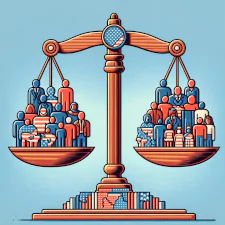
Before the Voting Rights Act, the U.S. struggled with voting rights. Despite laws for racial equality in voting, many African Americans couldn't vote.Methods like literacy tests and poll taxes were used. These were common in the South. They sidestepped the laws to limit black voting rights. This was against constitutional rights.
This voter suppression showed deep racial segregation, called Jim Crow. It affected all of American life. This set the stage for a major fight for equal voting rights.
The Civil Rights Movement
The Civil Rights Movement was crucial for voting rights change. It began in the 1950s and peaked in the 1960s. African Americans and allies fought against racial discrimination for equal rights.
A major event was the Selma marches in 1965. These peaceful protests faced violence from officials. They showed racial issues on national TV. These events sped up talks on voting rights reform. They led to President Johnson proposing the Voting Rights Act (VRA).
The Voting Rights Act An Era Of Reform
The VRA’s passage changed American democracy. President Johnson signed it on August 6, 1965. It aimed to make a voting rights bill to stop racial discrimination in voting. It helped African Americans vote without barriers.
Right away, more African Americans registered to vote. This was notable in the South, where bias was worst. For example, in Mississippi, black voter registration jumped from 6.7% in 1965 to 59.8% in 1969. This shows the VRA’s impactful change in voting changes.
Overtone and Initial Impact of The Voting Rights Act
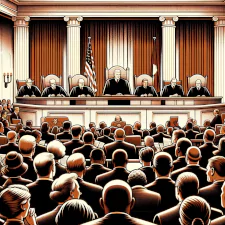
The VRA changed U.S. politics and society. It let more African Americans vote. This improved their political representation. It led to policy and resource shifts for marginalized communities.
But not everyone welcomed these changes. Resistance emerged in different places. There were efforts to weaken or bypass the VRA.
This began ongoing debates on voting rights. These debates still happen today. Section 2 of the VRA is central to this story. It brought wins and challenges in the fight for full voting equality.
What is Section 2 of The Voting Rights Act?
Section 2 of the Voting Rights Act protects impartial voting. It forbids any race or language-based discrimination in voting. This part of the Act is a key civil rights measure. It bans unfair voting practices.
This section ensures all U.S. citizens can vote freely, regardless of race or language. It focuses on two main issues: vote denial and vote dilution.
Vote denial means practices that stop someone from voting. This includes barriers to voter registration or at polling stations. Vote dilution doesn’t stop voting directly. Instead, it reduces the power of minority votes. This happens through gerrymandering or at-large voting systems.
In 1982, an amendment added the “results test” to Section 2. This test checks if electoral processes limit minorities in voting and electing representatives.
Key Court Cases on Section 2 of the Voting Rights Act
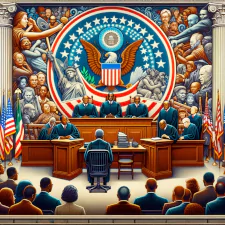
Over the years, court cases have shaped Section 2 of the VRA. In Thornburg v Gingles (1986), the Supreme Court set rules for proving vote dilution. It focused on racial bloc voting with strong evidence needed.
In Bartlett v Strickland (2009), the Court limited the preclearance requirement. It applied only to areas where minorities are half the electorate. The Court said creating crossover districts isn’t required by Section 2. These are districts where minorities, with some majority support, can elect their candidate.
Shelby County v Holder (2013) changed things further. It invalidated Section 4(b) of the VRA. This section defined preclearance rules. While affecting Section 5, it also increased the role of Section 2 in fighting discrimination.
These cases show the changing interpretation of Section 2. They underscore the ongoing fight for equal voting and other civil rights leaders.
The Impact of Section 2 of the VRA on U.S. Elections
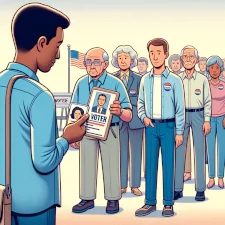
Section 2 of the VRA greatly affects U.S. politics, especially in redistricting. It ensures districts don’t reduce minority voting power. This has led to more inclusive political maps. Yet, there’s been pushback against these changes. This causes ongoing debates about redistricting.
Section 2 also impacts at-large elections. It prevents a majority from overriding minority votes to elect non-representative candidates.
It influences voter ID laws too. Any law that unfairly affects minorities conflicts with Section 2. While aiming for fairness and inclusivity in elections, Section 2 faces controversies. These are about how it’s interpreted and applied.
Disputes Around the Meaning and Application
The line between political and racial gerrymandering is often unclear, a common debate under Section 2. Political gerrymandering reshapes districts to favor a party. It’s seen as a regrettable but legal political tactic. Racial gerrymandering, altering boundaries to affect racial group influence, breaks Section 2’s rules.
Where one type of gerrymandering ends and the other begins is subjective. This has led to many legal disputes, with courts interpreting Section 2 differently.
For instance, some district court rulings have rejected redistricting that forms “majority-minority” districts. They argue these districts promote segregation, not true representation. Others see these districts as vital for minority representation.
Beyond gerrymandering, voter suppression claims are also key. These focus on practices like strict voter ID laws or limited early voting. Critics say these disproportionately harm minorities, violating Section 2.
Despite these debates, Section 2’s role in American democracy is clear. It shapes U.S. elections and guarantees fair representation for all citizens, regardless of race or language.
The Supreme Court’s decision in Brnovich v Democratic National Committee (2021)
Discussing Section 2’s impact on politics, Brnovich v Democratic National Committee (2021) is key. This case tested Section 2’s scope. The Supreme Court’s decision narrowed Section 2. It ruled states can set election laws, even if they disadvantage minority voters. This is as long as they’re not openly discriminatory.
This ruling caused much debate about voting rights. Critics argue it lets states pass laws that could harm minority voting access. They say these laws might seem harmless but have negative effects. Supporters claim it lets states create fair policies for voting officials and election integrity.
Against the backdrop of the Brnovich Supreme Court ruling, there are new federal proposals to strengthen voting rights. The “For The People Act” is a key example. It aims to increase voter access by automatic registration and more early voting. It also fights racial voting discrimination by reinstating VRA protections.
Another proposal is the John Lewis Voting Rights Advancement Act. Named after the civil rights leader John Lewis, it seeks to restore parts of the VRA. These parts were limited by Shelby County v Holder and other rulings, including Brnovich. This act would bring back the preclearance process. This process checks that voting law changes don’t racially discriminate.
These legislative efforts are still under debate. Their outcomes are uncertain. But they show the ongoing importance of voting rights in a healthy democracy.
Recaping Voting Rights Act Section 2…
Exploring Section 2 of the Voting Rights Act (VRA) has been enlightening and complex. We started with its roots in the Civil Rights Movement and its rise as a democracy cornerstone in America. Then we examined Section 2’s language and its effects.
We then looked at major court cases that shaped Section 2. Cases like:
Redefining its interpretation. They also showed different political subdivision judicial views of this law.
The Road Ahead: Embracing Change and Continuity
We then turned to current voting rights issues. These include voter suppression and gerrymandering debates. These issues affect national elections, redistricting, at-large elections, and voter ID laws.
Recently, we examined the 2021 Brnovich v Democratic National Committee case’s impact on Section 2. We also looked at proposed voting rights legislation under public scrutiny. These developments highlight ongoing debates about fair representation in democracy.
Answering Why The Voting Rights Act is Important
The Voting Rights Act (VRA) of 1965 is one of the most significant pieces of civil rights legislation in American history, primarily because of its profound impact on the enfranchisement of racial minorities, particularly African Americans in the South.
Historical Significance of the VRA: Examining its Impact on Civil Rights
Before the VRA, a myriad of discriminatory practices such as literacy tests, poll taxes, and other bureaucratic barriers were routinely used to disenfranchise Black voters and other minority groups.
The VRA, especially through its key provisions like Section 5, which required preclearance of changes to voting laws in certain states, and Section 2, which prohibited discriminatory voting practices nationwide, was instrumental in dismantling these systemic barriers.
This law significantly widened the scope of democracy in the United States by ensuring that all eligible citizens, regardless of race or language, had a fair and equal opportunity to participate in the electoral process.
Dismantling Discriminatory Practices: How the VRA Transformed Voter Registration and Participation
The impact was immediate and transformative: registration rates in historically discriminatory jurisdictions increased dramatically, leading to greater representation for minority communities in the political process.
Moreover, the importance of the VRA extends beyond the number of registered voters or minority candidates elected to office; it symbolizes a commitment to the principles of equality and justice that are foundational to American democracy.
Symbol of Democratic Equality: The VRA’s Role in Upholding Justice and Fairness in Voting
The act not only addressed specific injustices of the past but also served as a bulwark against future discriminatory practices. By acknowledging and rectifying historical racial injustices, the VRA played a crucial role in the broader civil rights movement, advancing the cause of equal rights for all Americans.
A Turning Point in American History: The VRA and its Contribution to the Civil Rights Movement
Its passage marked a turning point in the nation’s history, affirming the belief that the right to vote is fundamental and must be protected against any form of racial discrimination. The VRA’s ongoing relevance is evident as voting rights continue to be a contentious issue. Challenges and debates over voter ID laws, redistricting, and other voting restrictions and regulations demonstrate the act’s continued significance in ensuring that all Americans can exercise their right to vote freely and fairly.
Voting Rights Act: Why It’s Important What You Need To Know
Frequently Asked Questions
What did the Voting Rights Act of 1965 do?
The VRA is a landmark civil rights legislation aimed at eliminating racial discrimination in voting, ensuring all citizens have equal access to the electoral process.
When was the Voting Rights Act passed?
The Voting Rights Act was passed on August 6, 1965.
Why is the VRA important?
It has significantly reduced racial barriers to voting, increased voter registration and participation among minorities, and upheld democratic equality and justice.
What are the key provisions of the VRA?
Key provisions include the prohibition of discriminatory practices, the requirement for certain jurisdictions to obtain federal preclearance before changing voting laws, and enforcement of the 15th Amendment.
How has the VRA impacted voter participation?
The VRA led to a dramatic increase in voter registration and participation among racial minorities, particularly in the South.
Why does the VRA need reauthorization?
Reauthorization ensures continued protections against evolving discriminatory practices and allows for adjustments based on current conditions.
When did African Americans get the right to vote?
African American men were granted the right to vote in 1870 with the ratification of the 15th Amendment. However, widespread disenfranchisement persisted until the Voting Rights Act of 1965.
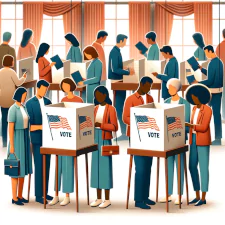
F*ckin’ tremendous things here. I am very glad to look your article. Thanks so much and i’m having a look ahead to touch you. Will you kindly drop me a e-mail?